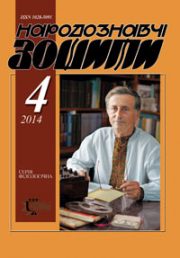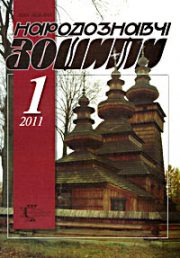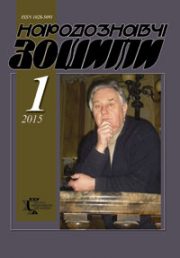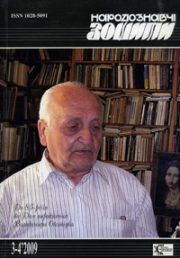The Ethnology Notebooks. 2022. № 5 (167), 1211—1218
UDK 7.025.4:022.4:674-416
DOI https://doi.org/10.15407/nz2022.05.1211
CHORNYI Maksym
- Ph.D. (Graduate student), senior laboratory assistant
- at the Department of Restoration
- of Architectural and Artistic Heritage
- of Lviv Polytechnic National University,
- 12, Bandera street, 79013, Lviv, Ukraine,
- Contacts: e-mail: maks.black.ua@gmail.com
Abstract. The necessity of preservation of interior design of historical architecture, in particular works of art made out of wood that are decorated with veneer sheets, such as furniture of the golden age of eclecticism and historicism, as well as the need to use the right methods of their preservation and care were considered in this article.
The article features the historiographic and artistic characteristics of the XIX century library cabinet from the reading room of the former library of Lviv Polytechnic School, which is nowadays called Julian Zakharevych Reading Room of Lviv Polytechnic National University, where a set of studies and applied preservation, restoration operations that are aimed at its preservation, were conducted.
The nature and degree of damage intensity of the library cabinet during the one and a half century history of its use was detected and analyzed after conducting preliminary studies. Besides that, the necessary sequence of measures prior to the process of supplementing the lost veneer sheets of the cabinet benchtop, which was concentrated on a detailed description of the applied technological methods and justification of their feasibility, was described generally. Special aspects of traditional woodworking craft were described. In particular, the details of European handicraft practices of making and using wooden slats and veneer sheets since the ХVІІІ century till the present days were clarified as well.
The full list of the lost veneer sheet fragments that were used in the process of supplementing, namely: chemicals, materials, tools, personal protective equipment, was provided.
According to the results of the restoration, it was established that by the use of correct methods of supplementing the lost veneer sheets it is possible to achieve a high degree of reproduction of aesthetic and practical qualities of veneered work of art. The necessity of development of interdisciplinary links and academic cooperation of preservation, conservation and exact sciences in the process of solving related issues was outlined.
Keywords: preservation, conservation, veneer sheets, furniture, works of art made out of wood, library cabinet, Julian Zakharevych.
Received 15.09.2022
REFERENCES
- Zhuk, O.K. (2008). Main building of Lviv Polytechnic. Edition II. Lviv [in Ukrainian].
- (1879, 20 December). DZWIGNIA, organ of the Polytechnic Society in Lviv. Lviv. 2 st. [in Polish].
- (1880, 20 Marca). DZWIGNIA, organ of the Polytechnic Society in Lviv. Lviv. 22—23 st. [in Polish].
- Bruce Hoadley, R. (1995). Chemical and Physical Properties of Wood.
- Roubo-Andre, Jacob. (1769—1777). The art of carpentry. Paris; ETH-Bibliothek in Zurich [in France].
- Britannica, T. (2019, September 20). Editors of Encyclopedia veneer. Encyclopedia Britannica. Retrieved from: https://www.britannica.com/topic/veneer
- Lvivcenter, Encyclopedia, Interaktyvnyi Lviv, Entsyklopedia, /Personalities/Hlembotska H. «Leonard Markoni». Retrieved from: https://lia.lvivcenter.org/uk/persons/marconi-leonard/







